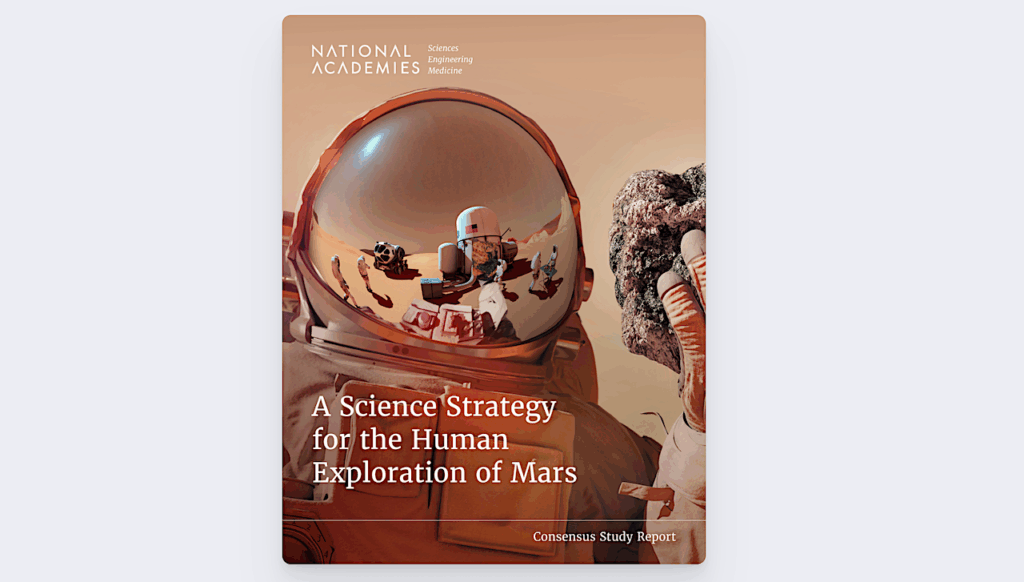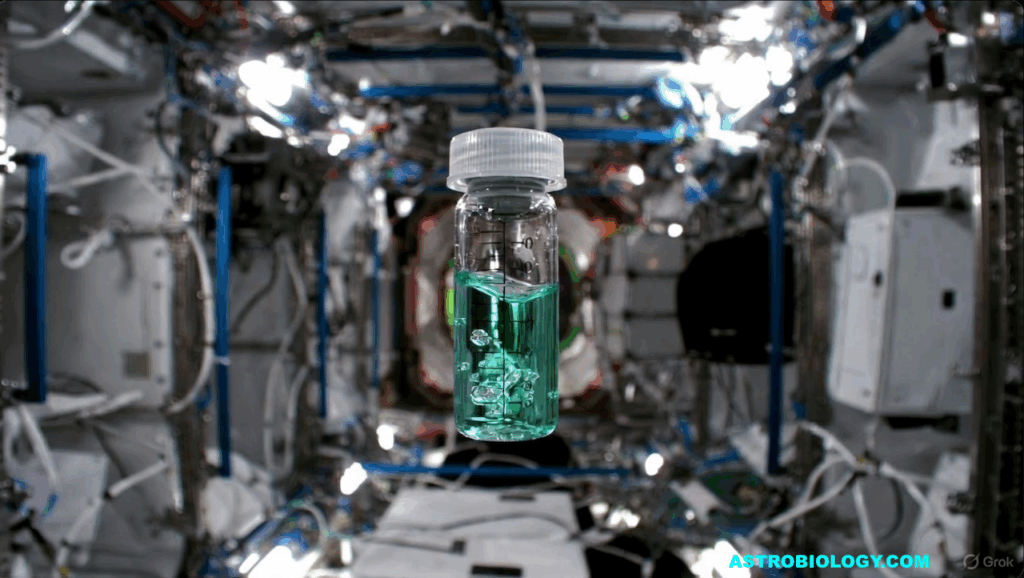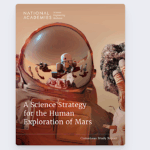Now Reading: The Clumped Isotope Signatures of Multiple Methanogenic Metabolisms
-
01
The Clumped Isotope Signatures of Multiple Methanogenic Metabolisms
The Clumped Isotope Signatures of Multiple Methanogenic Metabolisms
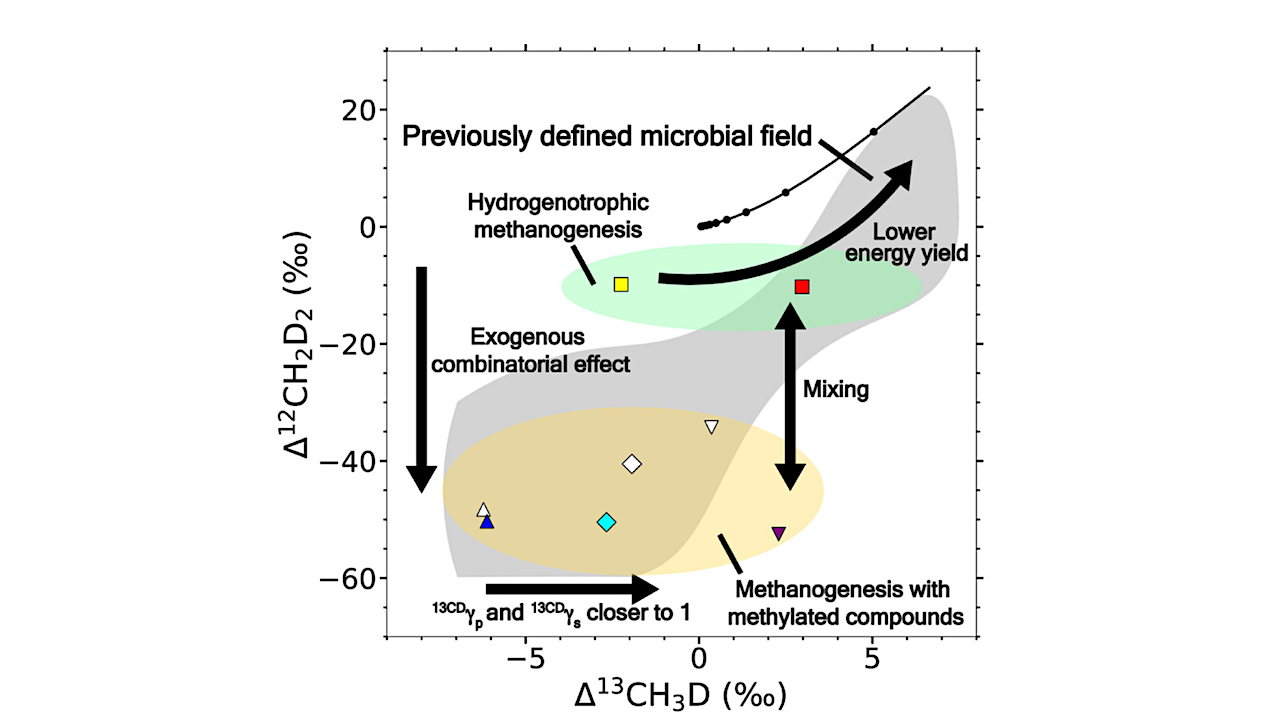
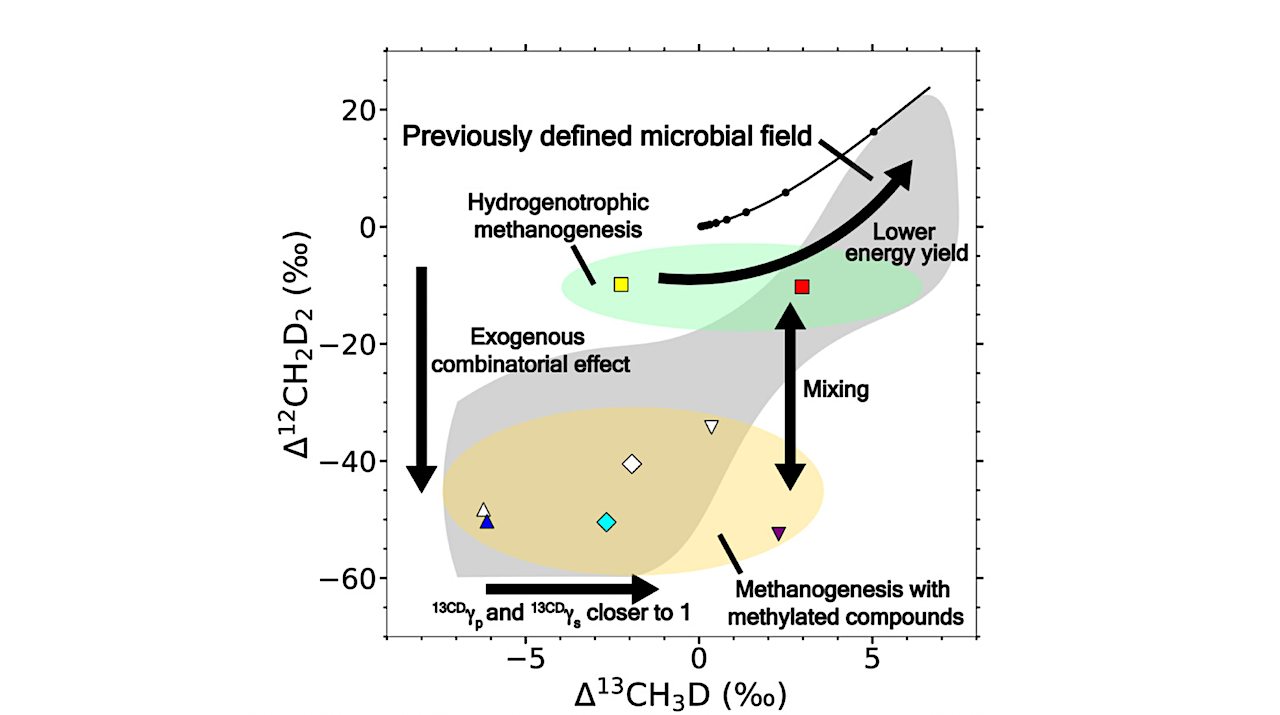
A summary of the influencing factors on the clumped isotope values of methanogenesis. The points on this figure show the average measured and “pure” clumped isotope values of each methanogenic pathway. The arrows show the processes that can influence the clumped isotope signatures, and the gray area shows the microbial methanogenesis field defined by the previous studies. Environmental Science & Technology via PubMed
Methane is a potent greenhouse gas, an important energy source, and an important part of the global carbon cycle. The relative abundances of doubly substituted (“clumped”) methane isotopologues (13CH3D and 12CH2D2) offer important information on the sources and sinks of methane.
However, the clumped isotope signatures of microbially produced methane from different methanogenic pathways lack a systematic investigation. In this study, we provide a data set encompassing isotopic signatures of hydrogenotrophic, methylotrophic, acetoclastic, and methoxydotrophic methanogenesis.
We find that a statistical “combinatorial effect” generates significant differences in 12CH2D2 compositions between hydrogenotrophic methanogenesis and the other pathways, while variations in the fractionation factors of clumped isotopologues result in differences in 13CH3D compositions between the methylotrophic, acetoclastic, and methoxydotrophic pathways.
The energy yield of methanogenesis and the energy conservation approaches implemented by different microbial strains may also influence the isotope values of methane. Further analysis suggests that previously observed isotopic signatures of methane in freshwater environments are potentially due to mixing between hydrogenotrophic and other methanogenesis pathways.
This study provides new experimental constraints on the isotope signatures of different microbial methanogenic pathways and evidence of the mechanisms responsible for the observed differences. This enables a better understanding of the sources and sinks of methane in the environment.
Astrobiology
Stay Informed With the Latest & Most Important News
Previous Post
Next Post
-
 012024 in Review: Highlights from NASA in Silicon Valley
012024 in Review: Highlights from NASA in Silicon Valley -
 02Panasonic Leica Summilux DG 15mm f/1.7 ASPH review
02Panasonic Leica Summilux DG 15mm f/1.7 ASPH review -
 03How New NASA, India Earth Satellite NISAR Will See Earth
03How New NASA, India Earth Satellite NISAR Will See Earth -
 04And Thus Begins A New Year For Life On Earth
04And Thus Begins A New Year For Life On Earth -
 05Astronomy Activation Ambassadors: A New Era
05Astronomy Activation Ambassadors: A New Era -
 06From Polymerization-Enabled Folding and Assembly to Chemical Evolution: Key Processes for Emergence of Functional Polymers in the Origin of Life
06From Polymerization-Enabled Folding and Assembly to Chemical Evolution: Key Processes for Emergence of Functional Polymers in the Origin of Life -
07SpaceX launch surge helps set new global launch record in 2024













